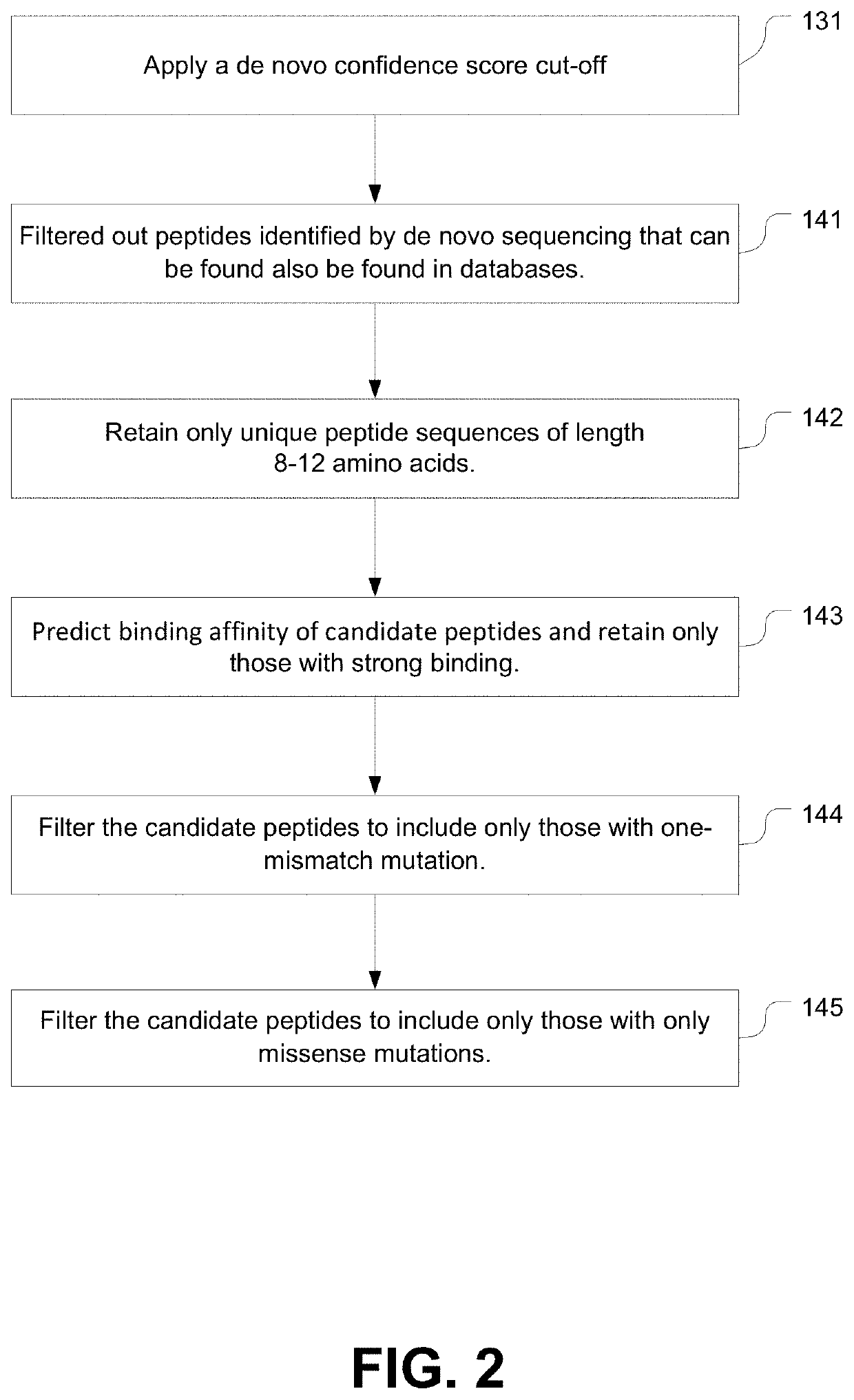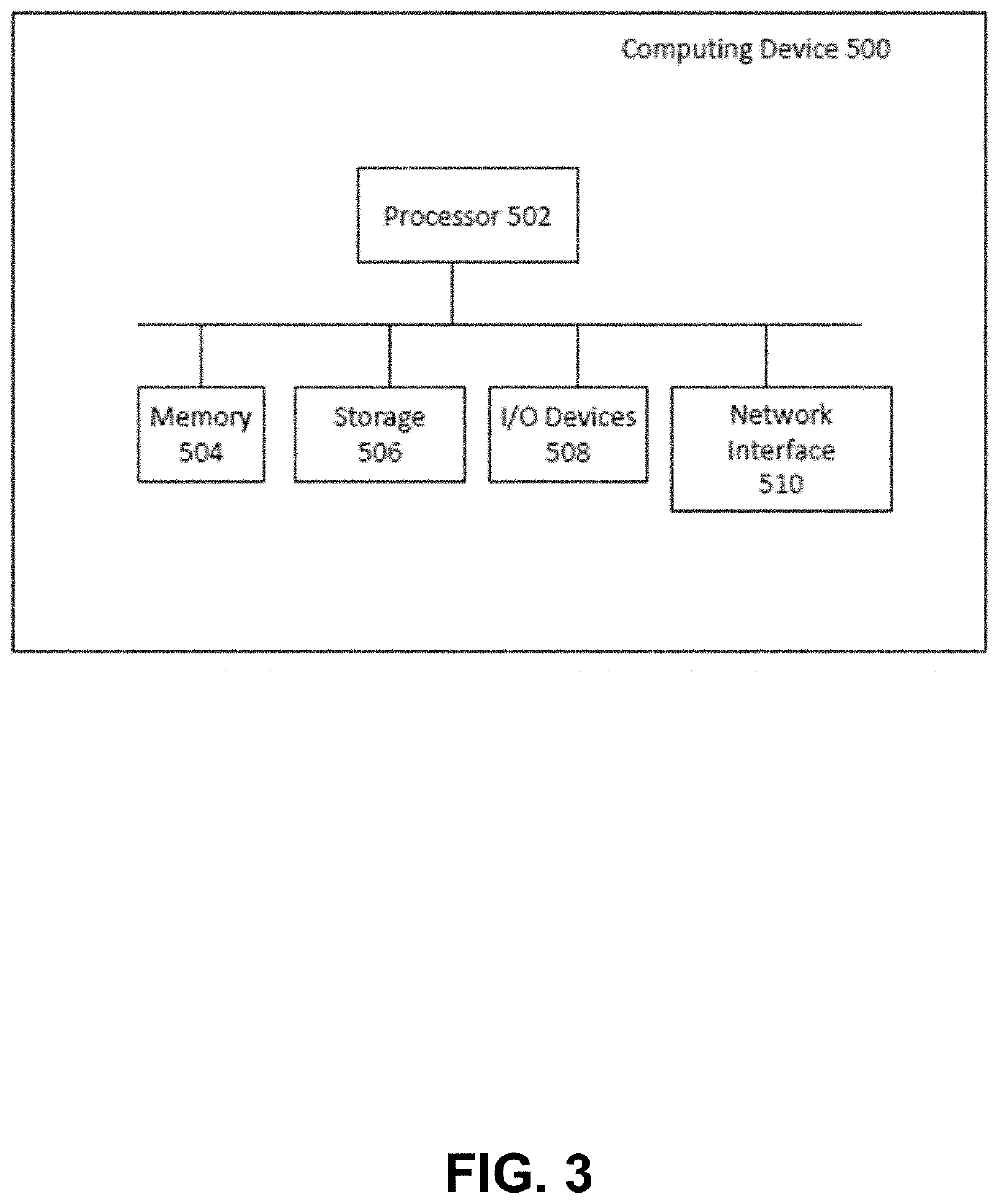Systems and methods for patient-specific identification of neoantigens by de novo peptide sequencing for personalized immunotherapy
- Summary
- Abstract
- Description
- Claims
- Application Information
AI Technical Summary
Benefits of technology
Problems solved by technology
Method used
Image
Examples
example i
Human Melanoma Tissue
[0330]The systems (called DeepNovo) and workflow described herein was applied to a recently published MS dataset of native melanoma tissues [4]. The dataset was collected from 18 melanoma patients and includes more than 95K HLA peptides, which represent a useful resource to train machine learning models for de novo peptide sequencing. More importantly, 11 neoantigens were identified, four of which were able to induce neoantigen-specific T cell responses. These neoantigens are used as targets for the validation of the present systems and workflow. Among the 25 patients, one individual (designated Mel15) was focussed on who carried a large set of identified neoantigens (8 out of 11) and showed complete remission in response to treatment [4].
[0331]The workflow for patient Mel15 is and experimental results are outlined in Table 1. The dataset of patient Mel15 was downloaded from the original publication [4] (16 RAW files, Q Exactive mass spectrometer, Thermo Fisher ...
example ii
Mouse Colon Cancer Tissue
[0343]The systems and workflow described herein were also tested on the CT26 dataset (Laumont et al. 2018, identifier PXD009065) was downloaded from the ProteomeXange (3 raw files). The raw data was first searched against the Swiss-Prot Mouse protein database using PEAKS X, with unspecific digestion mode. Deamidation(NQ) and Oxidation(M) were set as variable modifications.
[0344]At 1% FDR, PEAKS X identified 12488 precursor features. In the meantime, 92453 precursor features remained unidentified. As for training, DeepNovo was initialize with the same weights previously trained on Mel15, and the model was fine-tuned with the 12488 identified features from the CT26 data. Then the refinements were repeated similar to Example I above:
[0345]Refinement 1: DeepNovo confidence score was used to select high-quality predictions with an estimated accuracy of 95% at amino acid (AA) level. The score cut-off, −0.63, was set by plotting the accuracy versus score (y versus ...
example iii
Personalized De Novo Sequencing Workflow
[0356]Overview, Tumor-specific neoantigens play the main role for developing personal vaccines in cancer immunotherapy. For the first time, a personalized de novo sequencing workflow was proposed to identify HLA-I and HLA-II neoantigens directly and solely from mass spectrometry data. This workflow trains a personal deep learning model on the immunopeptidome of an individual patient and then uses it to predict mutated neoantigens of that patient. This personalized learning and mass spectrometry-based approach enables comprehensive and accurate identification of neoantigens.
[0357]De novo sequencing was brought to the “personalized” level by training a specific machine learning model for each individual patient using his / her own data. In particular, the collection of normal HLA peptides, i.e. the immunopeptidome, of a patient was used to train a model and then use it to predict mutated HLA peptides of that patient. Learning an individual's immun...
PUM
 Login to View More
Login to View More Abstract
Description
Claims
Application Information
 Login to View More
Login to View More - R&D
- Intellectual Property
- Life Sciences
- Materials
- Tech Scout
- Unparalleled Data Quality
- Higher Quality Content
- 60% Fewer Hallucinations
Browse by: Latest US Patents, China's latest patents, Technical Efficacy Thesaurus, Application Domain, Technology Topic, Popular Technical Reports.
© 2025 PatSnap. All rights reserved.Legal|Privacy policy|Modern Slavery Act Transparency Statement|Sitemap|About US| Contact US: help@patsnap.com



